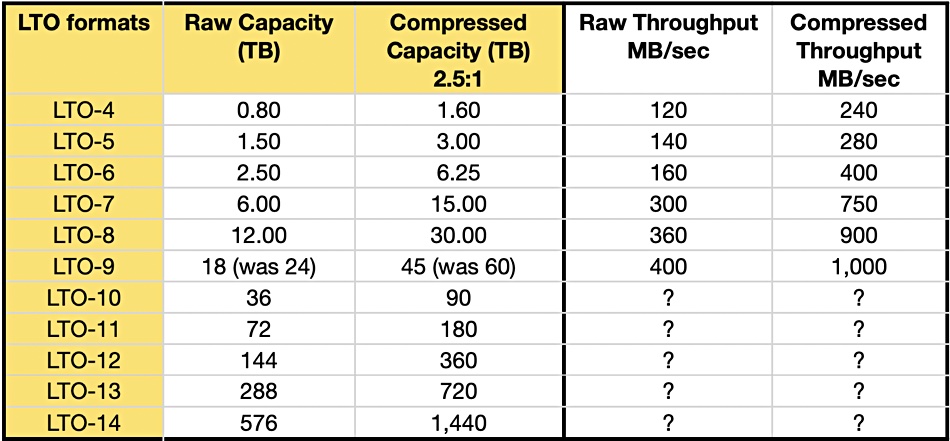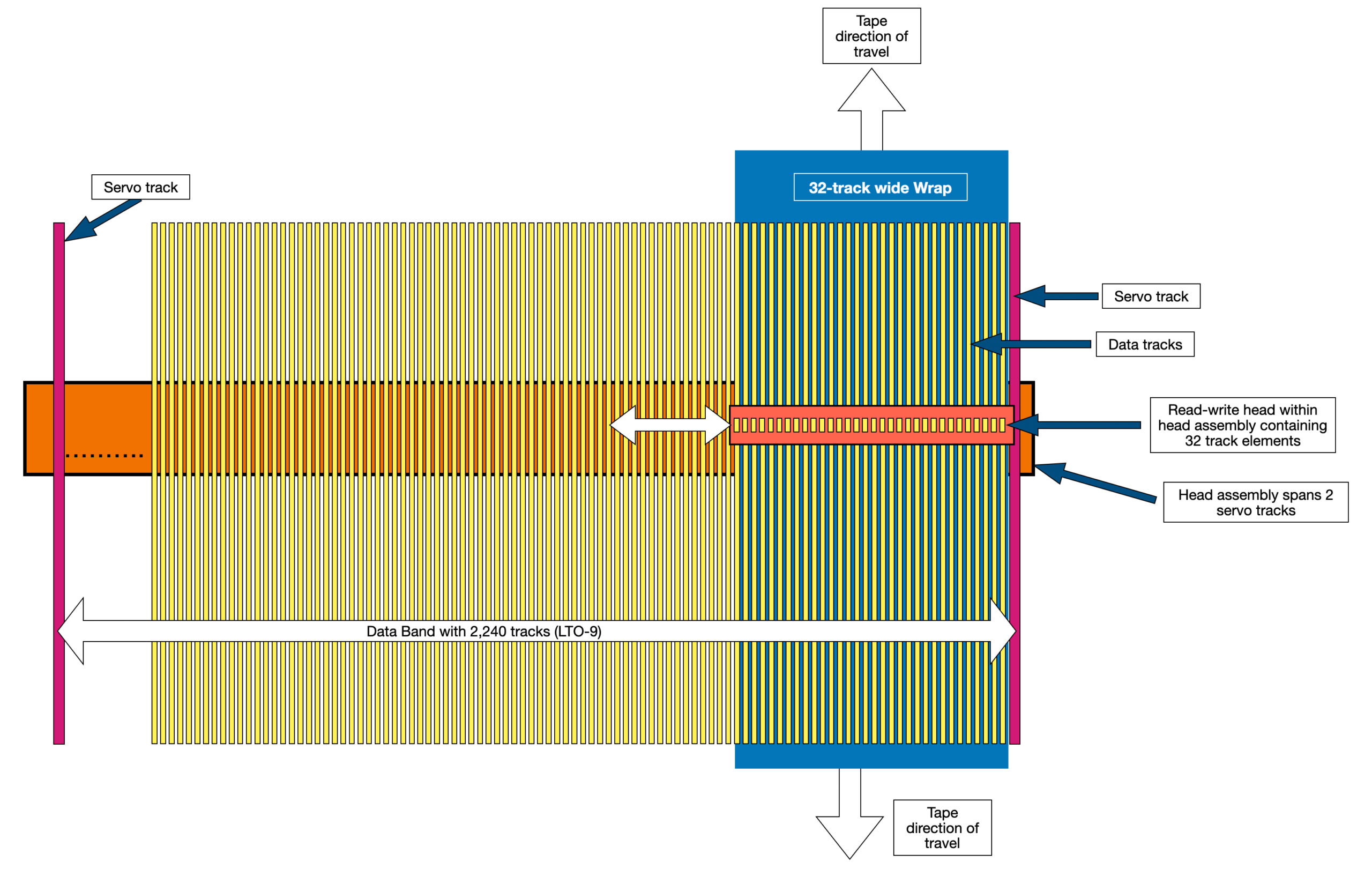LTO – Linear Tape Open – a standard for tape storage controlled by the LTO Program Technology Provider Companies – HPE, IBM, and Quantum. Only IBM makes the tape drives. It is currently in its tenth generation, LTO-10, and has a roadmap out to LTO-14.


LTO-9 tape is organised longitudinally with 4 parallel data bands separated by 5 servo tracks, which are used by the head asembly to position the read-write head with its 32 elements. The head assembly moves between data bands with its read-write head moving within a data band across the tracks. Each data band has 2,240 tracks, with the tape containing 8,960 tracks in total. The data bands are written in 3, 1, 0, 2 order across the tape.
The read-write head has 32 read/write elements and, as the tape moves underneath the head elements, 32 tracks are read or written in parallel with the collection of tracks called a wrap. The initial track set or wrap is written alongside a data band’s edge, right by the servo band. When full, the next track is witten in the reverse direction alongside the other and opposite bounding servo band. When it’s full the next wrap is written just inside the first wrap. When that is full the next track wrap is written the other side of the data band, just inside the previously written wrap there. Thus wrap writing proceeds towards the middle of the data band, resembling a coiled serpent with its head in the middle of the coil, and is called linear serpentine recording. It continues untill all four data bands are full.
Write tracks partially overlap, which is called shingling, while read tracks, narrower than the write tracks, do not overlap. This allows more tracks to be packed into the same physical space on the tape, maximizing the use of the tape’s surface area. The read heads are effectively narrower than the write heads to accurately read the non-overlapped portion of each track, ensuring reliable data retrieval.



